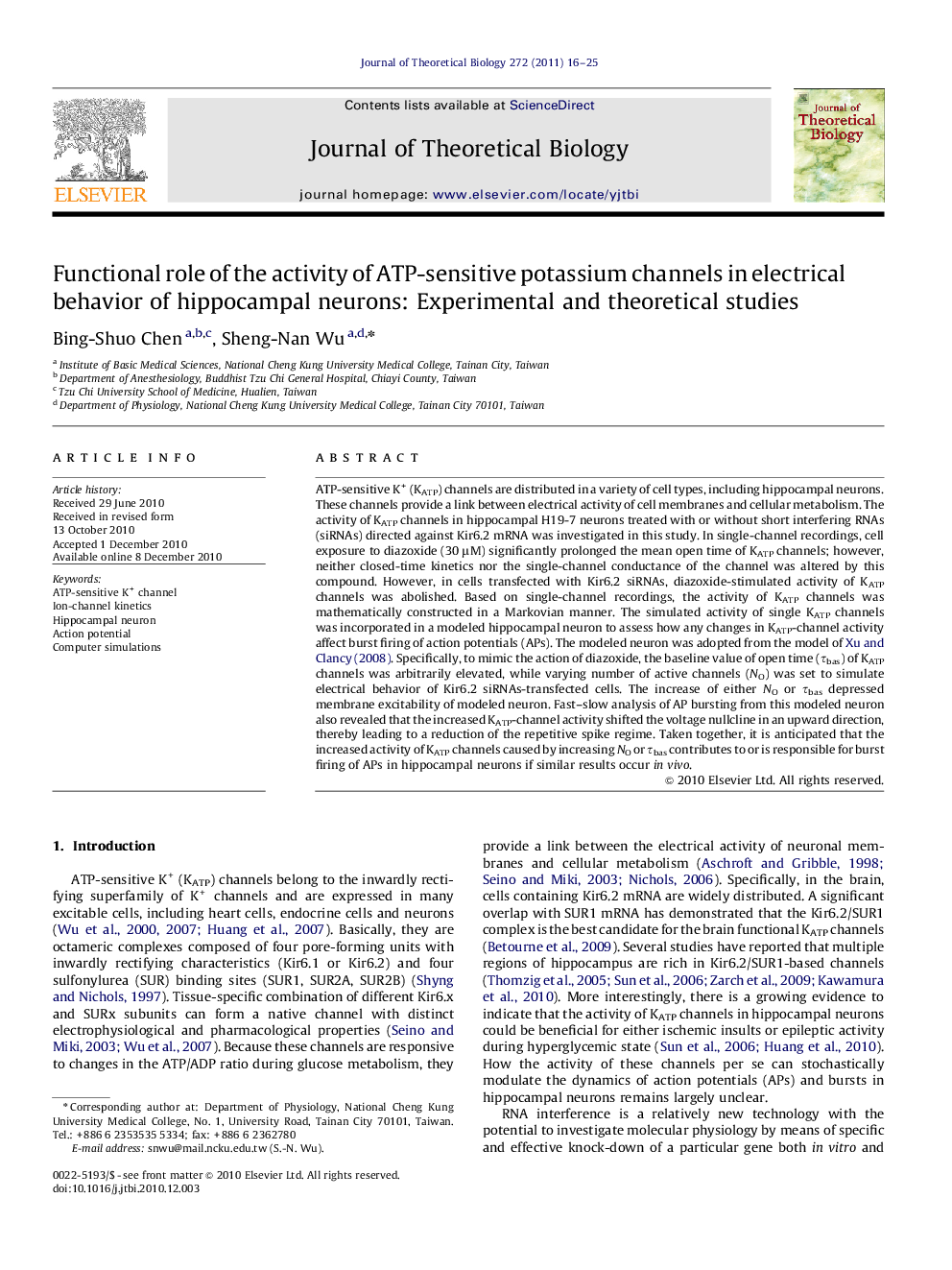| Article ID | Journal | Published Year | Pages | File Type |
|---|---|---|---|---|
| 4497201 | Journal of Theoretical Biology | 2011 | 10 Pages |
ATP-sensitive K+ (KATP) channels are distributed in a variety of cell types, including hippocampal neurons. These channels provide a link between electrical activity of cell membranes and cellular metabolism. The activity of KATP channels in hippocampal H19-7 neurons treated with or without short interfering RNAs (siRNAs) directed against Kir6.2 mRNA was investigated in this study. In single-channel recordings, cell exposure to diazoxide (30 μM) significantly prolonged the mean open time of KATP channels; however, neither closed-time kinetics nor the single-channel conductance of the channel was altered by this compound. However, in cells transfected with Kir6.2 siRNAs, diazoxide-stimulated activity of KATP channels was abolished. Based on single-channel recordings, the activity of KATP channels was mathematically constructed in a Markovian manner. The simulated activity of single KATP channels was incorporated in a modeled hippocampal neuron to assess how any changes in KATP-channel activity affect burst firing of action potentials (APs). The modeled neuron was adopted from the model of Xu and Clancy (2008). Specifically, to mimic the action of diazoxide, the baseline value of open time (τbas) of KATP channels was arbitrarily elevated, while varying number of active channels (NO) was set to simulate electrical behavior of Kir6.2 siRNAs-transfected cells. The increase of either NO or τbas depressed membrane excitability of modeled neuron. Fast–slow analysis of AP bursting from this modeled neuron also revealed that the increased KATP-channel activity shifted the voltage nullcline in an upward direction, thereby leading to a reduction of the repetitive spike regime. Taken together, it is anticipated that the increased activity of KATP channels caused by increasing NO or τbas contributes to or is responsible for burst firing of APs in hippocampal neurons if similar results occur in vivo.
